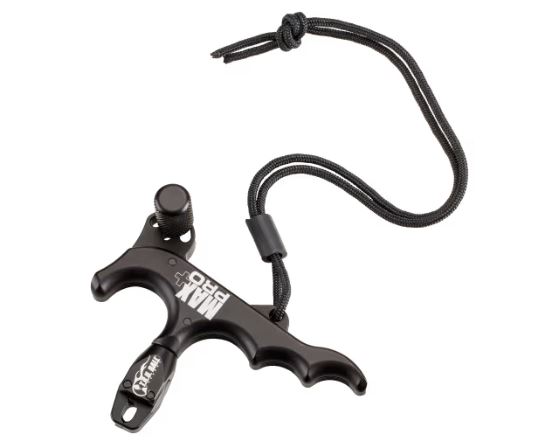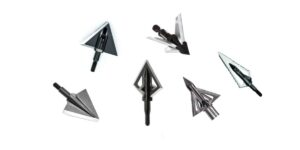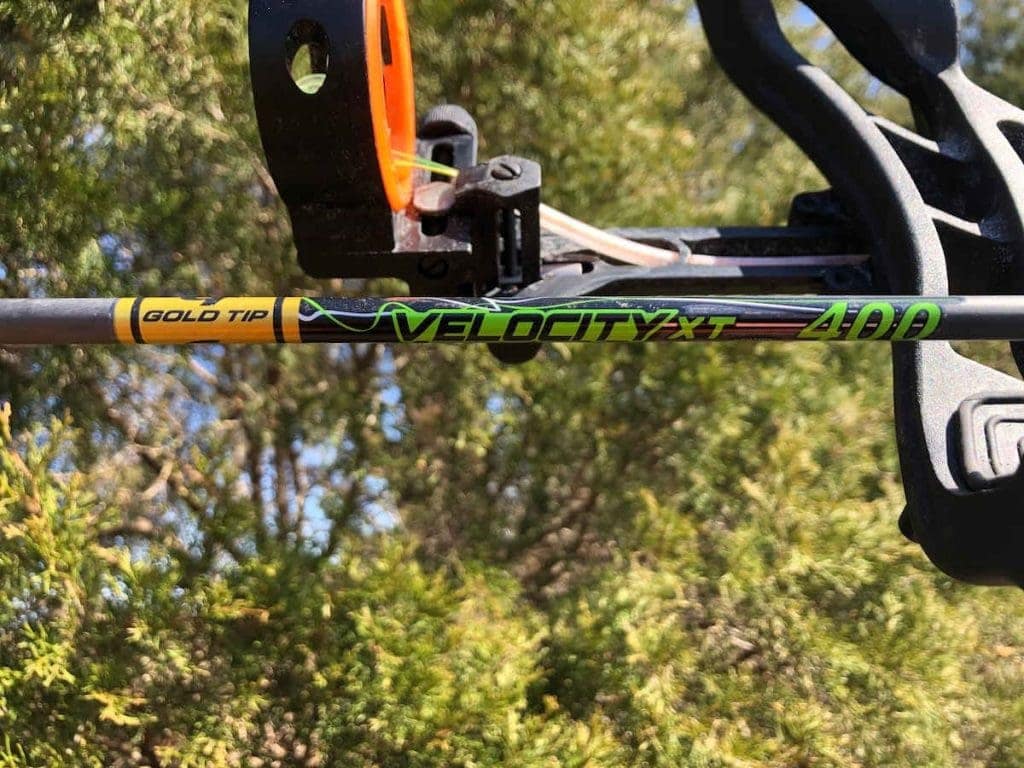In today’s archery world, a release aid has become almost universal, particularly among archers who favor compound bows over traditional archery equipment.
And for a good reason – utilizing a release aid can significantly enhance accuracy and consistency in shooting. This tool has become an indispensable part of the archer’s kit, helping to refine technique and improve overall performance.
I recently had the opportunity to personally test the T.R.U. Ball Max Pro Plus 4, here’s what I found.
The T.R.U. Ball Max Pro Plus Bow release truly stands out in my personal experience. Its 4-finger design feels comfortable in hand and significantly enhances draw length and speed, making every shot feel more natural and efficient.
The silent and accurate operation of this release is something I’ve particularly appreciated, especially in tense hunting scenarios. The compact and ergonomic design of the head and jaws noticeably optimizes the bow’s performance.
Handling the release is intuitive and satisfying, thanks to the pull-to-open and release-to-close mechanism of the knurled thumb barrel trigger.
The 360° rotating head is a standout feature for me, as it eliminates any concerns about string torque affecting my shots.
Adjusting the trigger sensitivity is a boon, allowing me to fine-tune my release point for various shooting conditions.
The built-in lanyard is a thoughtful addition for safety, and the 4-finger bed grooves ensure a secure grip every time.
As an ambidextrous release, it’s versatile for all shooters. Proudly made in the USA, this release is now a reliable and high-performing part of my archery gear.
Contents (Jump to Topic)
ToggleThe Anatomy Of A Thumb Release
A thumb release is best described as a handheld mechanical aid, featuring a thumb-actuated trigger assembly. This mechanism is designed to aid archers in achieving consistency when anchoring and releasing their shots.
When tripped, a thumb release’s jaw or hook disengages a compound bow’s string, initiating the shot. The pressure required to trip the thumb release’s trigger varies from one particular release to the next.
This setting is also adjustable on certain models.
In general, thumb releases come in various sizes, shapes, and configurations.
The most popular releases of this variety are typical of a three-finger design, meaning that they are intended to be cradled in hand with an archer’s index, middle, and ring fingers.
Finding The Right Thumb Release
Locating the perfect thumb release to meet your particular needs is actually far less complicated than you might anticipate. If possible, visit the nearest archery pro shop to your location.
True Ball Max Pro Plus 4
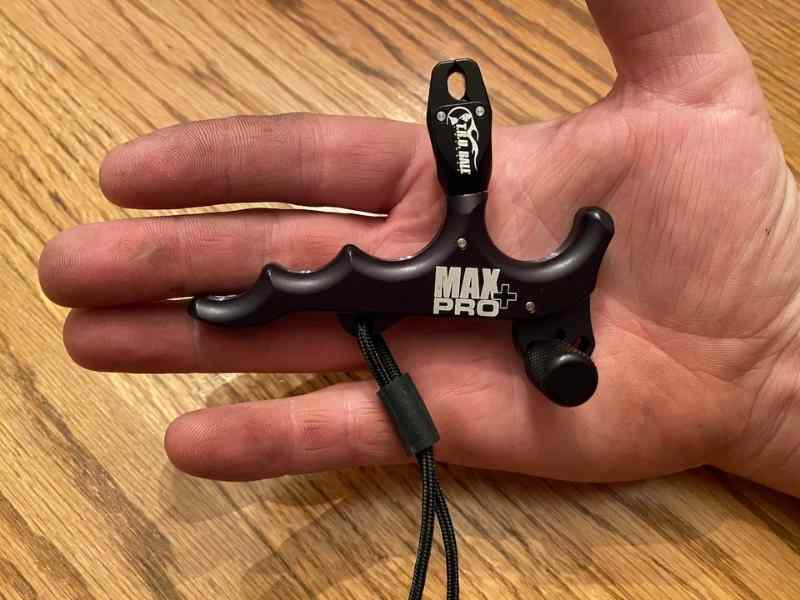
T.R.U. BALL Max Pro Plus 4
Most seasoned archery technicians will be happy to let you handle a number of individual releases, making it possible to determine which feels most natural in your hand.
It is also important to consider the adjustability of any thumb release you are considering purchasing. Today, most quality thumb releases feature both trigger-sensitivity and trigger-positioning adjustments.
Both are equally important, as they have direct bearing over an archer’s ability to operate an individual release comfortably.
Initial Adjustments
Upon purchasing a thumb release, making a few minor adjustments might be necessary to maximize comfort during the shot cycle. Initially, a thumb release’s trigger-positioning adjustment will prove far more vital than that pertaining to its trigger sensitivity.
The trigger of your release should be adjusted to allow seamless thumb actuation without being forced to stretch or manipulate your hand to any excessive degree.
This is important as it prevents last-minute fidgeting during the shot that can wreak havoc on your overall accuracy.
Next, the sensitivity of your release’s trigger can be manipulated slightly if you wish.
Generally speaking, trigger tension should be light enough to prevent flinching upon release yet heavy enough to prevent unintended release.
If anything, a slightly heavier trigger is best for beginners, as it prevents the errant discharge of arrows. Once you feel comfortable with your new release, its trigger tension can always be reduced in hindsight.
Designating An Anchor
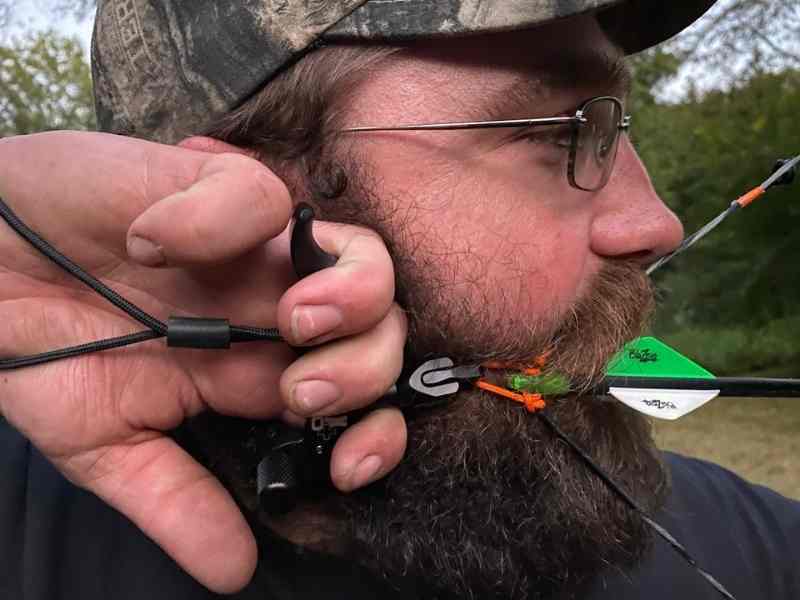
When shooting a thumb release, an archer’s anchor point is likely to differ quite drastically from that which was used when shooting a traditional wrist-strap style release.
This stems from the obvious differences in the way that an archer’s release hand is orientated during the shot cycle.
Rather than facing downward, the palm of an archer’s hand faces outward away from their face when using a thumb release.
For this reason, many archers anchor the point at which their index and middle join with their hand, at the corner of their mouths, again, with their palms facing outward.
Aside from this variable, an archer should still practice all other points of proper form as they otherwise would. This includes ensuring that your head and neck are properly aligned with your bow’s string.
Ideally, the bow’s string should be anchored at the corner of the mouth and the tip of the nose.
It is also worth mentioning that you will likely need to adjust the height of your bow’s peep sight, after switching from a wrist-strap style release, to a thumb release. This is due to the lower angle at which it is necessary to anchor your release hand.
Without adjusting a bow’s peep sight, one would be required to crane their head, thereby negatively impacting their form.
Practice Makes Perfect
Once you have selected your release of choice and adjusted it as desired, it will be time to hit the range for some practice. Initially, practice will need to be limited to relatively close distances.
Remember, the development of proper form is far more important than shooting at excessive distances, especially at first.

Strive for consistency, taking every step necessary to avoid punching your release’s trigger. If necessary, adjust the release’s trigger tension to prevent excess jerking upon actuation. Finding the ideal spring tension for your release will likely take time and a fair amount of experimentation.
As your accuracy increases, slowly extend the distance at which you practice, being extremely careful to not graduate too quickly beyond your point of comfort.
While practicing this manner, you can also experiment with applying a certain degree of back-tension to further increase your accuracy.
Many archers state that they have benefited from squeezing their shoulder blades together as a means of exerting back pressure while using a thumb release.
Worth A Shot
For many archers, the change to thumb release use is a highly beneficial one. In fact, switching to the use of a thumb release has been proven effective in eliminating target panic and trigger punching among a number of archers who previously utilized a wrist-strap release.
This is of significant value when attempting to rectify ongoing accuracy issues.
Other archers find that they prefer a thumb release simply due to its compact design. One is no longer forced to tether themselves to a wrist strap, leaving an archer’s hands free when needed in a hunting scenario.
Regardless of your personal reasoning, you will likely find satisfaction in your choice to give thumb release use a try. With a little patience and a wealth of persistent practice, you might even find yourself retiring your wrist-strap releases in favor.

